Basil pesto is a beloved and versatile sauce that brings a burst of fresh, vibrant flavor to a variety of dishes. Whether you’ve made a large batch of homemade basil pesto or bought a jar from the store, proper storage and preservation techniques are crucial to maintain its taste and quality.
In this guide, we’ll explore storing and preserving basil pesto and the best practices for short-term and long-term storage, as well as methods to extend the shelf life of your pesto.
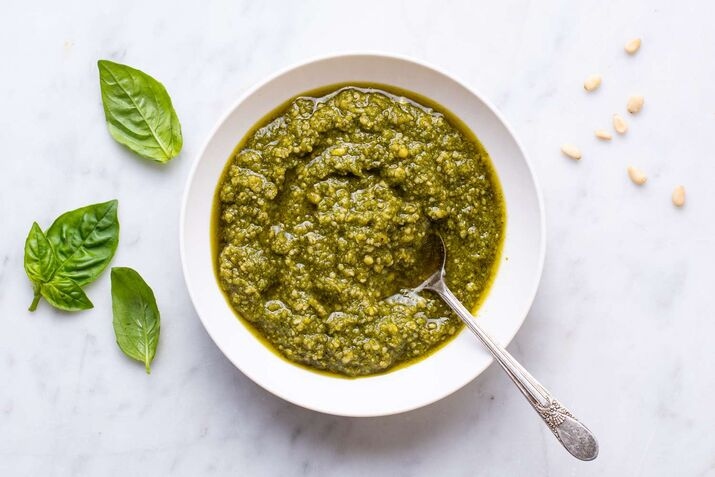
Short-Term Storage
When it comes to storing basil pesto for a short period, refrigeration is key. This method keeps your pesto fresh and ready to use within a few days to a week.
Refrigeration Tips
Refrigerating basil pesto is straightforward but requires a few essential steps to ensure it stays fresh and flavorful. Start by transferring the pesto into a clean, airtight container. This helps prevent oxidation and keeps the pesto’s vibrant green color intact.
Ensure the container is filled to the top, leaving as little air as possible to minimize oxidation. If you frequently use the pesto, consider dividing it into smaller containers to reduce the number of times you open and expose it to air. Store the pesto in the back of the refrigerator where the temperature is most consistent, avoiding the door where temperature fluctuations are more common.
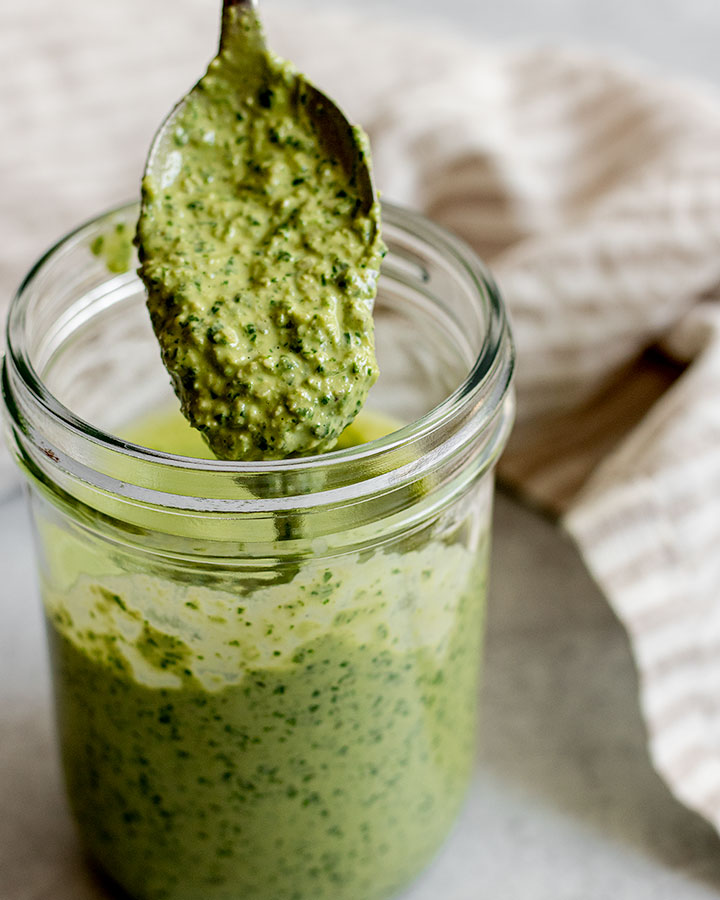
Ideal Containers
Choosing the right container is vital for short-term storage. Glass jars with tight-fitting lids are ideal because they are non-reactive and help maintain the pesto’s flavor. Glass does not absorb odors or stains, ensuring that the taste of your pesto remains pure. If you use plastic containers, ensure they are BPA-free and have an airtight seal to prevent air exposure. Plastic containers should be food-grade and free of any previous strong-smelling contents to avoid transferring odors to your pesto.
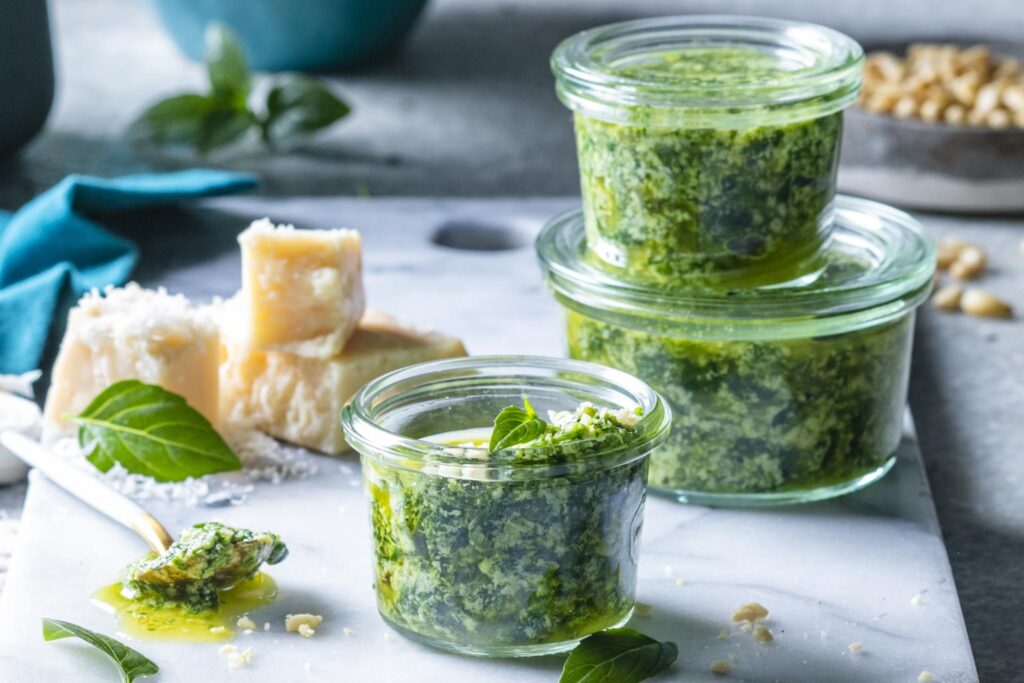
For those who prefer using jars, Mason jars with rubber-sealed lids are excellent choices. These jars provide an airtight seal, preventing air and moisture from entering. Additionally, they come in various sizes, allowing you to store the pesto in portions that suit your needs.
Shelf Life
Refrigerated basil pesto typically lasts for about 5 to 7 days. It’s important to note that the pesto may darken slightly due to oxidation, but this doesn’t affect its taste. To extend its freshness, you can pour a thin layer of olive oil on top of the pesto before sealing the container. This oil barrier reduces exposure to air and helps preserve the pesto’s vibrant color and flavor.
To further ensure the pesto’s quality, always use clean utensils to scoop out the pesto. Avoid double-dipping or introducing any contaminants that could speed up spoilage. Regularly check for any signs of mold or off odors, and discard the pesto if you notice any changes in color, smell, or texture.
Long-Term Preservation
For those who want to enjoy their basil pesto beyond a week, freezing is an excellent option. Freezing pesto locks in its fresh flavor and allows you to store it for several months.
Freezing Pesto
Freezing basil pesto is simple and effective, but there are some best practices to follow to ensure the best results.
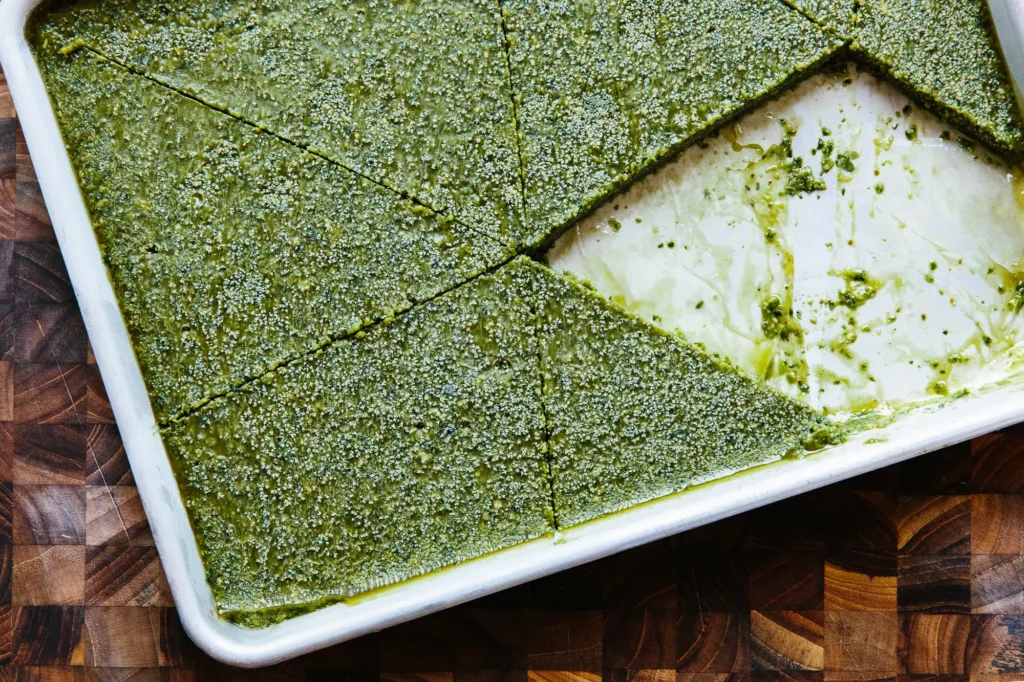
Best Practices
When freezing pesto, portioning it into smaller amounts is recommended. This way, you can thaw only what you need without exposing the entire batch to air and potential spoilage. Ice cube trays are perfect for this purpose, as they allow you to freeze individual portions.
Label each container or bag with the date of freezing to keep track of its age. Proper labeling helps you use the oldest pesto first, maintaining a rotation that ensures none of your pesto goes to waste. Additionally, flattening freezer bags before freezing helps save space and allows for quicker thawing.
Freezing Methods
There are two primary methods for freezing pesto: ice cube trays and freezer bags. For ice cube trays, simply spoon the pesto into the tray compartments, freeze until solid, and then transfer the pesto cubes to a freezer-safe bag. This method is convenient because it provides pre-measured portions, perfect for single-use servings.
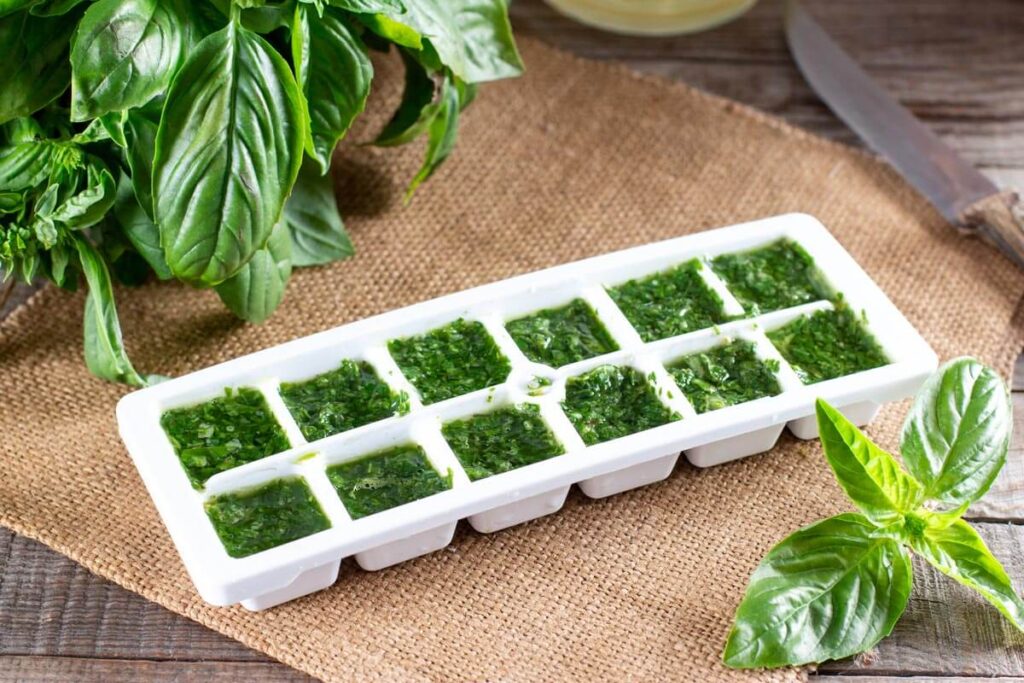
For freezer bags, place the pesto in a bag, flatten it to remove excess air, and freeze. Flattening the bag ensures that the pesto freezes evenly and takes up less space in the freezer. Both methods work well and keep the pesto fresh for up to 6 months. Silicone molds can also be used for portioning and freezing pesto. These molds are flexible and make it easy to pop out frozen pesto portions.
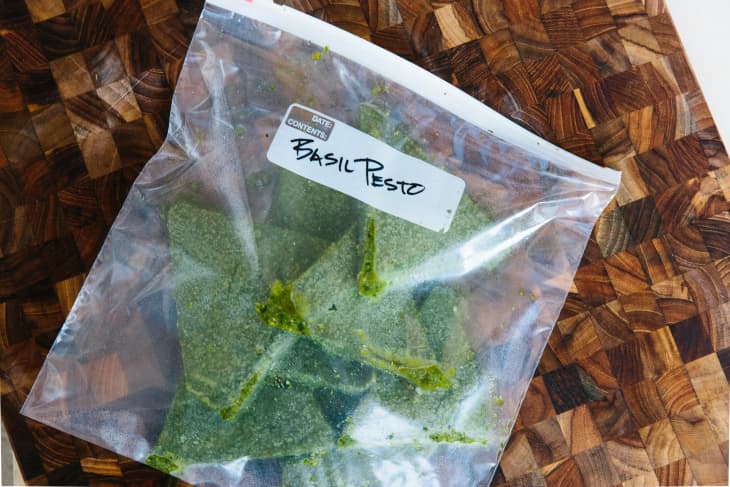
Thawing Frozen Pesto
Once you’re ready to use your frozen pesto, proper thawing techniques are essential to maintain its quality.
Safe Thawing Techniques
The safest way to thaw frozen pesto is to transfer it from the freezer to the refrigerator and let it thaw slowly overnight. This gradual thawing process helps preserve the texture and flavor of the pesto. If you’re in a hurry, you can also thaw pesto by placing the sealed bag in a bowl of cold water. This method can speed up the process without compromising the quality.
Avoid using hot water or microwaving, as these methods can alter the pesto’s flavor and texture. Rapid temperature changes can cause the oils in the pesto to separate, leading to a less appealing texture. If you need to use the pesto immediately, consider adding it directly to a hot dish, allowing it to thaw and incorporate naturally.
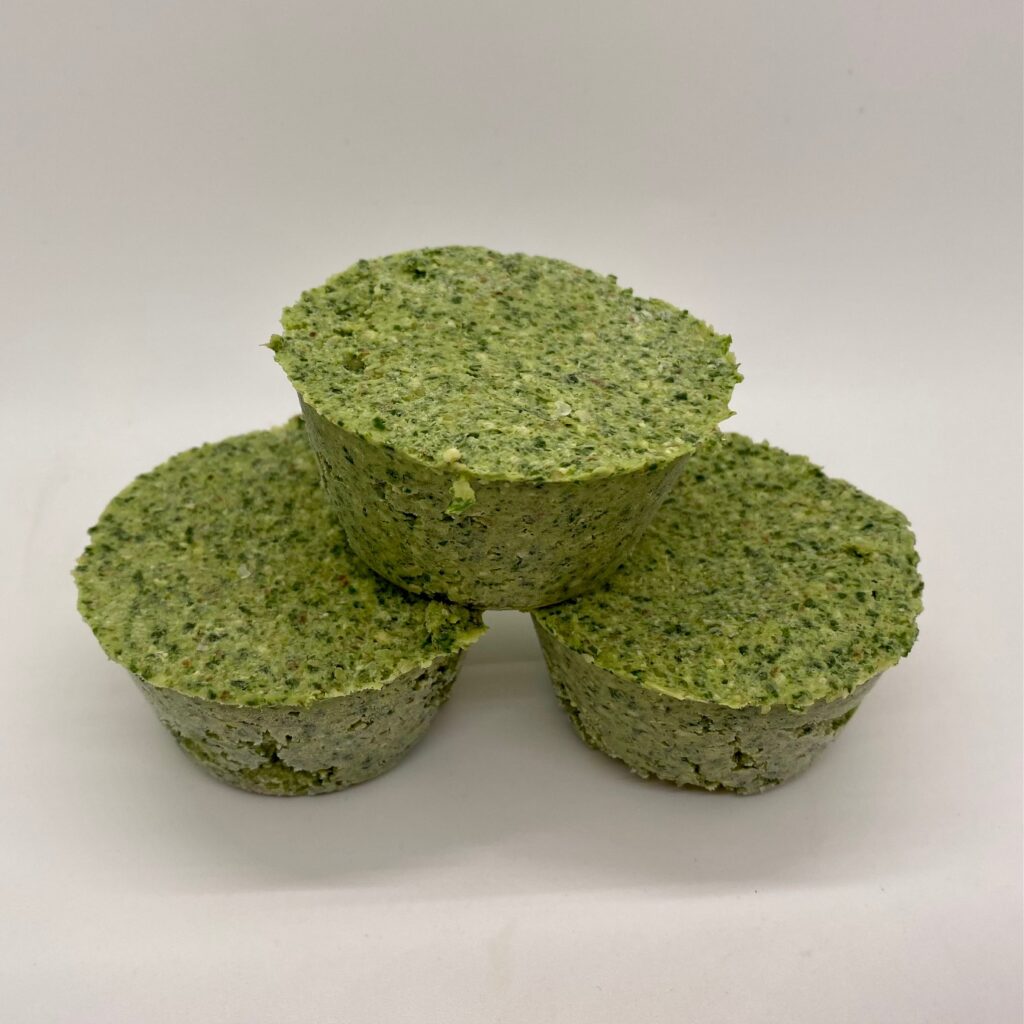
Extending Shelf Life
There are several methods to extend the shelf life of your basil pesto, ensuring you can enjoy it for longer periods without compromising on taste and quality.
Using Citric Acid

Adding a small amount of citric acid to your pesto can help extend its shelf life. Citric acid lowers the pH level, making the environment less hospitable for bacteria and mold. Start with a pinch of citric acid and adjust to taste, keeping in mind that too much can alter the flavor of your pesto.
Citric acid can be purchased in powder form from most grocery stores or online. Dissolve the citric acid in a small amount of water before mixing it into the pesto to ensure even distribution. If you prefer a more natural approach, a few drops of lemon juice can also lower the pH level, though it will slightly alter the flavor profile of the pesto.
Vacuum Sealing
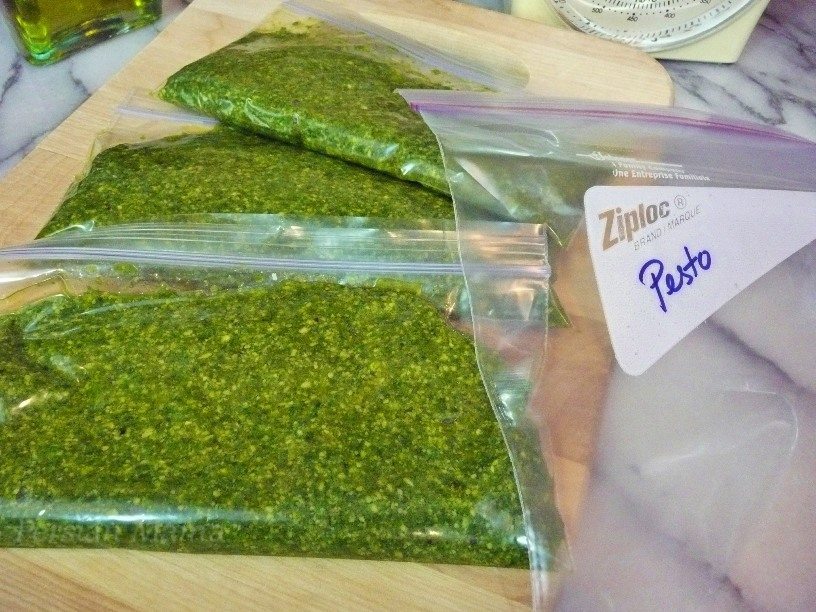
Vacuum sealing is an effective way to extend the shelf life of basil pesto. This method removes air from the packaging, which helps prevent oxidation and spoilage. Vacuum-sealed pesto can be stored in the refrigerator for up to 2 weeks or in the freezer for several months. Investing in a good quality vacuum sealer can be beneficial if you frequently store homemade sauces and pestos.
To vacuum seal pesto, place it in a vacuum-sealable bag, ensuring there is no air trapped inside. Follow the instructions of your vacuum sealer to create an airtight seal. For best results, portion the pesto into usable amounts before sealing, so you can thaw only what you need. Properly sealed pesto retains its color, flavor, and nutritional value for a longer period.
Oil Sealing Method
Another traditional method to extend the shelf life of basil pesto is the oil sealing method. After transferring the pesto to a jar, pour a thin layer of olive oil on top before sealing the jar. This oil layer acts as a barrier, protecting the pesto from air and preventing oxidation. The oil-sealed pesto can be stored in the refrigerator for up to a month.
Remember to stir the pesto well before using it to incorporate the oil back into the mixture. Olive oil not only preserves the pesto but also enhances its flavor. Use high-quality extra virgin olive oil for the best results. This method is particularly useful for those who enjoy the rich, robust taste that olive oil imparts to pesto.
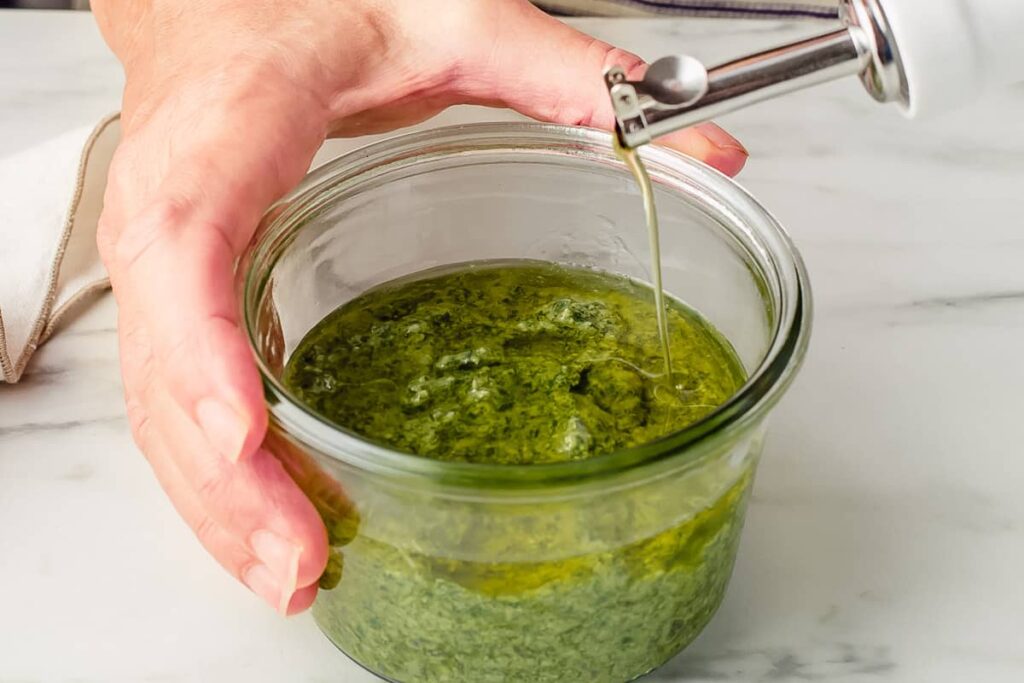
In conclusion, proper storage and preservation techniques are essential to keep your basil pesto fresh and flavorful. Whether you’re refrigerating it for short-term use or freezing it for long-term storage, following these best practices will ensure you can enjoy your pesto at its best. Additionally, using methods like citric acid, vacuum sealing, and oil sealing can help extend the shelf life of your pesto, allowing you to savor its delicious taste for even longer.
FAQs
Conclusion
Proper storage and preservation techniques are crucial for maintaining the fresh, vibrant flavor of basil pesto. Whether you’re storing it in the refrigerator for short-term use or freezing it for long-term enjoyment, following these best practices ensures your pesto stays delicious and ready to enhance your favorite dishes.
Disclosure: Our blog contains affiliate links to products. We may receive a commission for purchases made through these links. However, this does not impact our reviews and comparisons. We try our best to keep things fair and balanced, in order to help you make the best choice for you.







